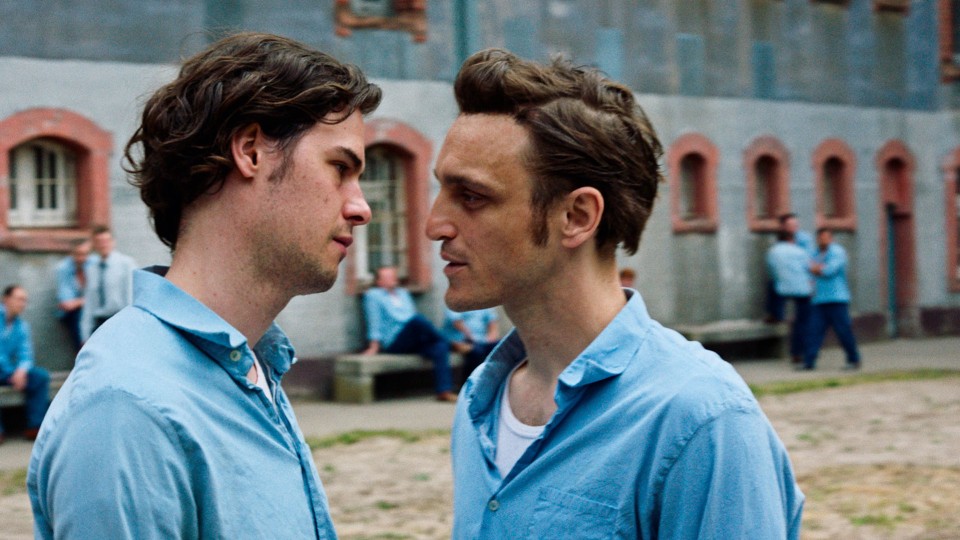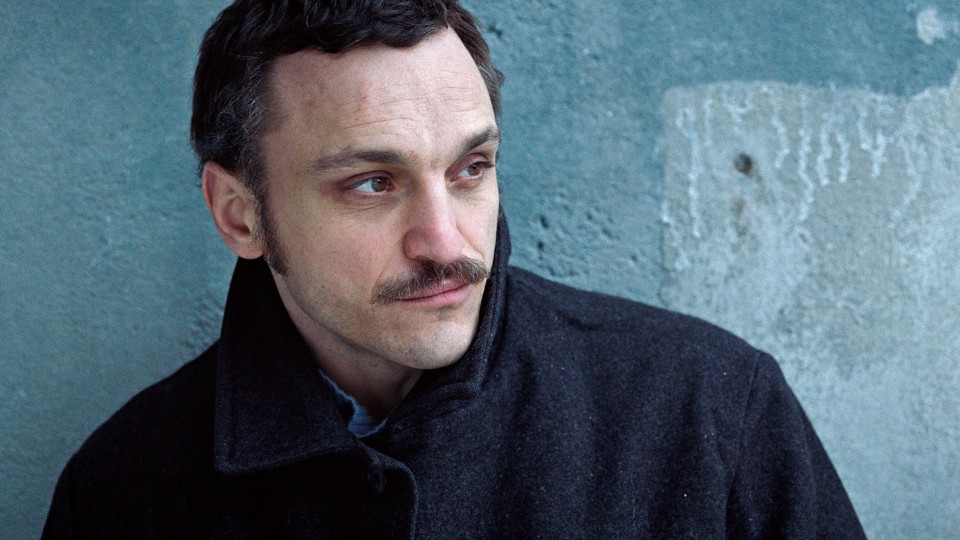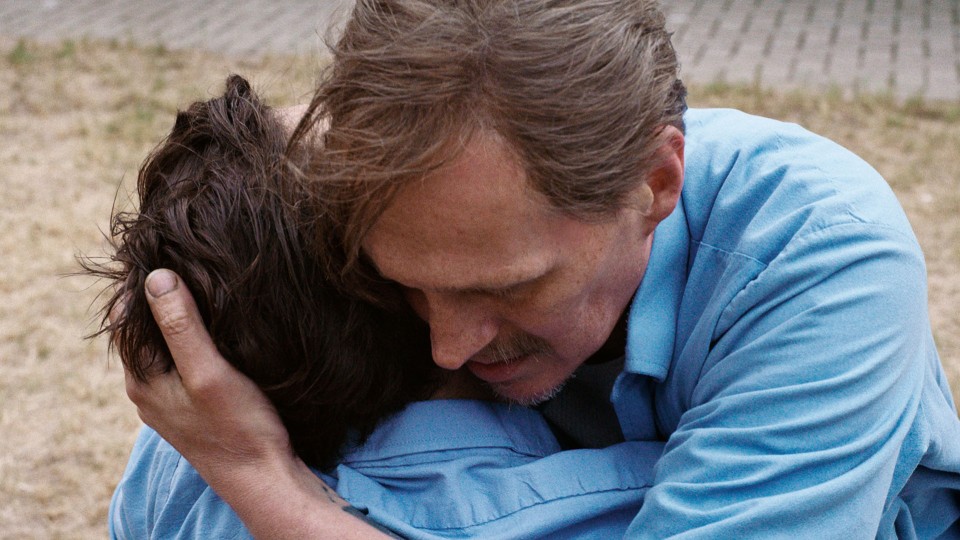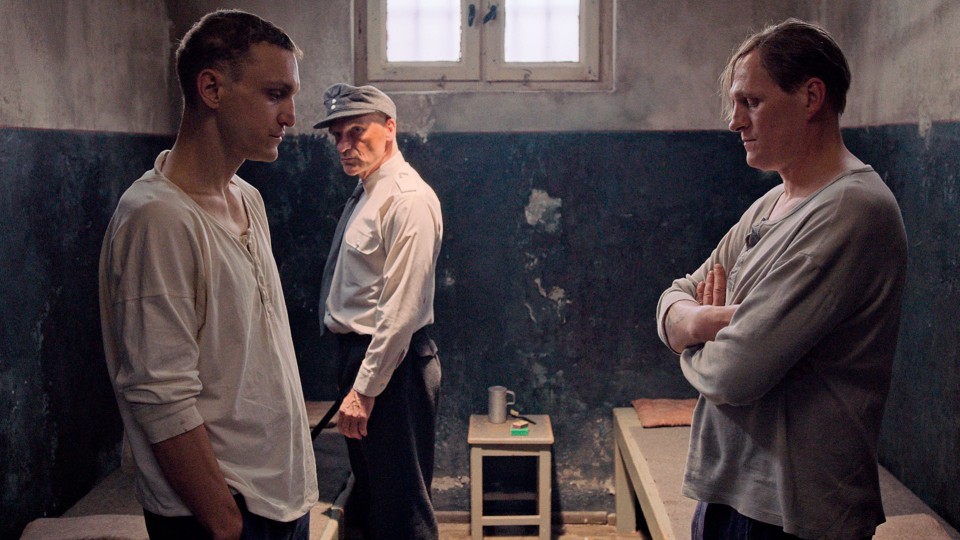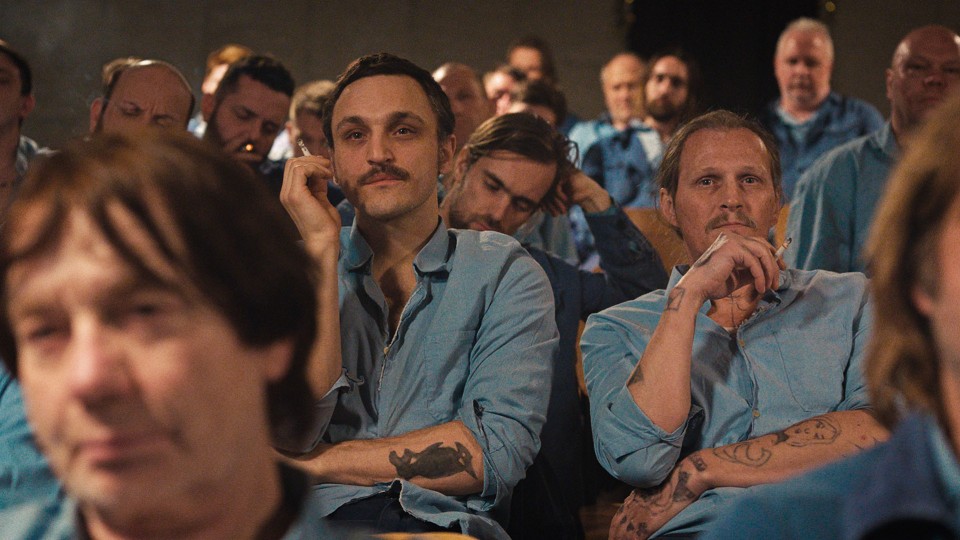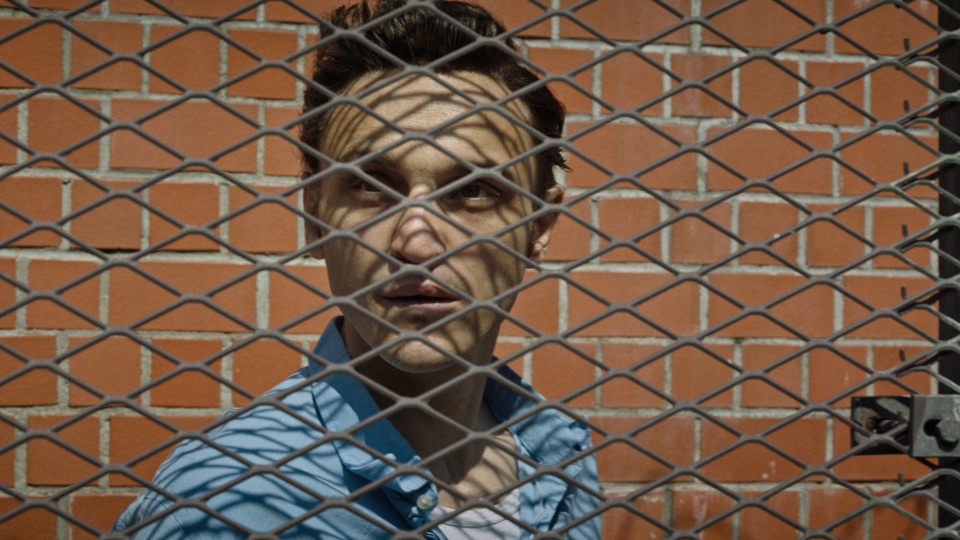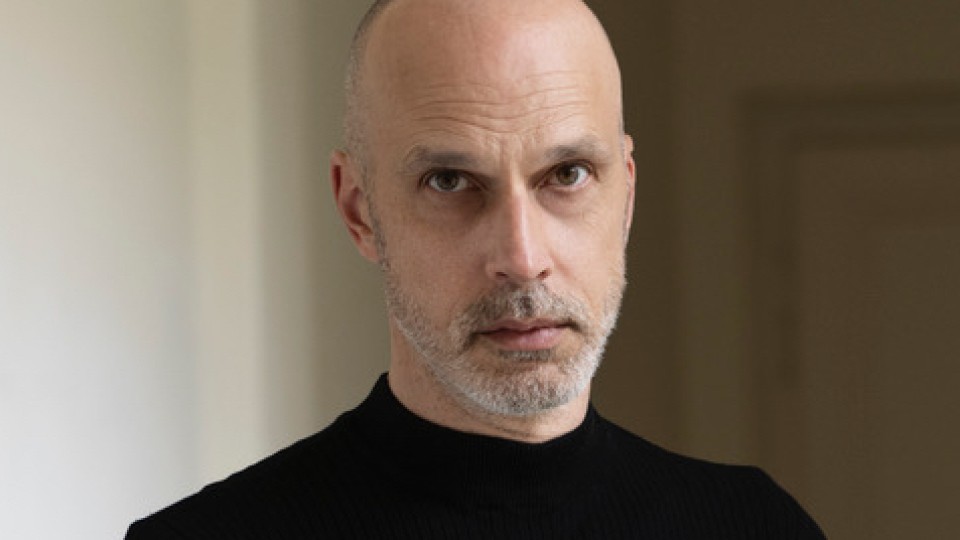When the state dictates which love is allowed to exist, it puts lives at stake. As a gay man Hans Hoffman is thrown into a
concentration camp under the Nazis; immediately after being liberated by the Allies he is put back behind bars, because the
passion in his heart is against the law. Both in the Nazi dictatorship and also in the democracy which follows. Sebastian
Meise’s Great Freedom casts a subtle light on elements of society (and of societies) which are still concealed. His protagonist Hans represents
countless lives which were destroyed because regimes abused one of the most fundamental human rights by means of social discrimination
and legal persecution – and, in too many cases, this is still happening.
GREAT FREEDOM is a journey through time, with stops in 1945, 1957 and 1968/69; judging from the tattoo on Hans’s arm, it extends
further back into his youth. It tells the story of one man and of society’s treatment of homosexuality during the 20th century. Is there a real person who inspired you in your creation of the main protagonist, Hans Hoffmann?
SEBASTIAN MEISE: The starting point for the story of Hans was a series of real cases featuring gay men who were liberated from concentration
camps by the Allies but then taken straight to German prisons to serve the remainder of their sentence according to paragraph
175 of the German Criminal Code. The persecution they suffered was by no means over for them, because homosexuality remained
a crime for decades after the war. Extensive research and numerous interviews with contemporary witnesses in Vienna and Berlin
revealed the fastidious, inventive attitude of the state as it persecuted so many harmless men, at great expense. Hans, our
main protagonist, personifies the fate of people who ended up in prison again and again despite their innocence, people whose
livelihoods and relationships were destroyed, and whose stories vanished in the files of bureaucracy.
Clearly the screenplay was based on comprehensive research, also encompassing the legal history. What was the background to
paragraph 175, which leads to Hans’s conviction in the film? What did people who were sentenced on the basis of paragraph
175 experience in the penal institutions?
SEBASTIAN MEISE: Unfortunately, the history of the persecution of homosexuals is by no means over. Today homosexuality is still illegal in
a third of countries around the world, in some cases punishable by long prison sentences or even death. In the 20th century
there were similar legal statutes in almost all Western democracies, which were enforced with varying degrees of severity
and later abolished at different points in time. In Germany paragraph 175 came into force at the end of the 19th century, but its history dates back to the early Middle Ages. During the Nazi regime the law was made harsher, and it was
this version that was adopted in the post-war period; the government was finally forced to modify it under pressure from the
reform movement at the end of the 1960s. In Austria paragraph 129 developed in a similar way, although it was only abolished
two years later, in 1971. As a rule the “175ers” didn’t do very well in the penal institutions, and the suicide rate – certainly
due to lack of perspective for the future – was very high. Those people were treated with great discrimination; homophobic
attitudes among fellow inmates and prison staff had very deep roots.
The film is set almost entirely in prison, with a few flashbacks to freedom. Did you ever consider having more of the action
take place outside the prison walls? Or was it clear to you from the outset that the lack of freedom, which is the fate of
your protagonists Hans and Oskar throughout their lives, could only be depicted behind bars?
SEBASTIAN MEISE: The basic idea was to tell Hans’s story through the period that he spent in prison. Since the ban on love meant ultimately
that these people were banned from living, prison represented the recurring constant in Hans’s life, which becomes a never-ending
time loop for him. In terms of narrative, Thomas Reider and I were motivated by one idea: imagine you live in a world where
love is forbidden by law and punishable with imprisonment. To us it sounded like a dystopia that inevitably invited comparisons
with Orwell’s 1984. We wanted to find a form to convey this, and telling Hans’s life story by focusing on the periods he spent
in prison seemed the best way of making the story more universal. After all, prison walls, barred cells and uniforms are essentially
the same in every period and in every place.
You portray the flashbacks of freedom by means of analogue footage, some from a surveillance camera, some on private Super
8 film, and in the projection at the beginning of the film you create a fine introduction to the medium of cinema. What were
your thoughts behind that formal choice?
SEBASTIAN MEISE: That form of surveillance really did exist. Since love between men was criminalized, gay men had to find locations where
at least fleeting encounters could take place. Among these places were so-called “cottages”, men’s public toilets
which were
placed under surveillance by the Vice Squad with great enthusiasm and inventive techniques. When we saw samples of that footage
we knew immediately that it should feature at the beginning of our film, because it referred to so many levels of filmmaking
which have always interested me. In a projected film we observe a cameraman secretly making a film of intimate encounters.
The cameraman, who is reflected from our perspective in the semi-transparent glass, turns the gaze back on us, demonstrating
to us the essentially voyeuristic nature of film as a medium. The issues about infringement of privacy which have such a major
role in our story are also behind the private Super 8 footage of Hans and Oskar. And the question of how much privacy an individual
should be allowed is a subject that concerns us today too: perhaps more than any other.
Since the majority of the film takes place behind prison walls, the choice of location must have been a crucial factor. Was
it important for you to film in a real prison?
SEBASTIAN MEISE: For the cellblock it was clear to us that we needed a real historic prison, even though filming in the original location was
sometimes really exhausting. It was cold in winter, the cells were cramped and stuffy, and the distances were immense in that
huge building. We couldn’t help but picture the countless destinies that had been enacted here over a hundred years, and even
though none of us could fully imagine what it means to be locked up, we could at least try. The prison we finally chose featured
architecture typical for the period when the film is set. The hollow interior, like a panopticon, the huge open central corridor
that extended up to all the floors and made it possible for a single guard to watch over virtually the entire building. That
construction style represented a society that aimed to achieve omnipotence in terms of surveillance.
In Franz Rogowski (Hans) and Georg Friedrich (Viktor) you have two great acting personalities. Which qualities did they bring
to the roles they played?
SEBASTIAN MEISE: Franz and Georg are incredibly passionate about acting. They are both very individual and unpretentious, and they devote
themselves completely to the characters they’re playing. Franz had to lose about 12 kg between the first and second shooting
blocks, and Georg had to appear for make-up every day at five in the morning to have amateur-looking tattoos applied to his
body and pockmarks to his face. They both invest a huge amount, and they’re very precise, so they demand the same thing from
the director. That’s what makes the work so intensive. Even while we were still drafting the screenplay I knew they would
be my dream cast, and it’s quite possible that without them we wouldn’t have been able to make the film at all. I had the
feeling that a very special energy would come about between the two of them, and in the final analysis that’s at the heart
of the film. I think I can speak for both of them when I say they respect each other a lot, and one of the main tasks in directing
the film was to capture the chemistry that exists between them, as actors but also as human beings, as effectively as possible.
However, Anton von Lucke (Anton) and Thomas Prenn (Thomas) were also very important for this film. They completed a wonderful
cast.
The chiaroscuro approach used by camerawoman Crystel Fournier brings a fascinating precision and power to a place which doesn’t
allow much in the way of beauty. How did you decide the role of lighting and visual language in this story with her?
SEBASTIAN MEISE: We realized that as a basic rule, in each scene we had to stay close to the characters and create the sensation of being imprisoned.
In the final analysis you can only achieve that if you place the human body in a relationship to the space. When it came to
resolution, we based our approach to a large extent on the emotional state of our characters in the different periods. The
more static, higher resolution of the 40s, the more dynamic, mobile 50s and finally the 60s, where our characters – and the
film itself – come to rest. The thing I respect immensely about Crystel is the simplicity and straightforwardness she brings
to her work at all levels. There is always a logic behind her lighting, which has a very strong relationship to reality. A
neon tube or a lightbulb casting harsh light down from the ceiling can have enormous beauty. And Crystel treats colours in
a similar way, because the world of artificial lighting is full of varying temperatures. That gives the film a colourful quality
which fits with our story and fills the grey-blue prison world with life.
The “great freedom” certainly can’t be lived, and it doesn’t exist in the place where we as viewers might initially imagine.
What were your thoughts on freedom as the film reached completion?
SEBASTIAN MEISE: To be perfectly honest, the concept of freedom is too broad for me to grasp. But I can say with certainty that I find it
absolutely horrific when love is criminalized. Paragraph 175 wasn’t just inhuman; it also contravened the constitution of
the country. For decades the state refused to accept that it had infringed upon people’s human rights – the rights it should
have been protecting. And in many cases gay people encounter the same attitude to this very day. Naturally people can eventually
become exhausted by this constant battle for acceptance, and then they may prefer to create parallel worlds where they can
find the freedom they have always been looking for. In that way the concept of freedom, and also of love, becomes a very personal
one. Our main protagonist Hans finds love in prison, of all places. And with a convicted murderer, of all people. In our free
democracies it may seem that the battle for equality no longer needs to be fought. But if you bear in mind that the history
of culture is full of cyclic repetition, you become aware how fragile this achievement is. Recent developments in Hungary
demonstrate that. In my view, the longing for freedom and love can’t be suffocated. Our world is brutal and ugly in many ways,
but people never stop searching for the beauty in existence. That may sound melodramatic, but it’s how I feel.
Interview: Karin Schiefer
June 2021
Translation: Charles Osborne

